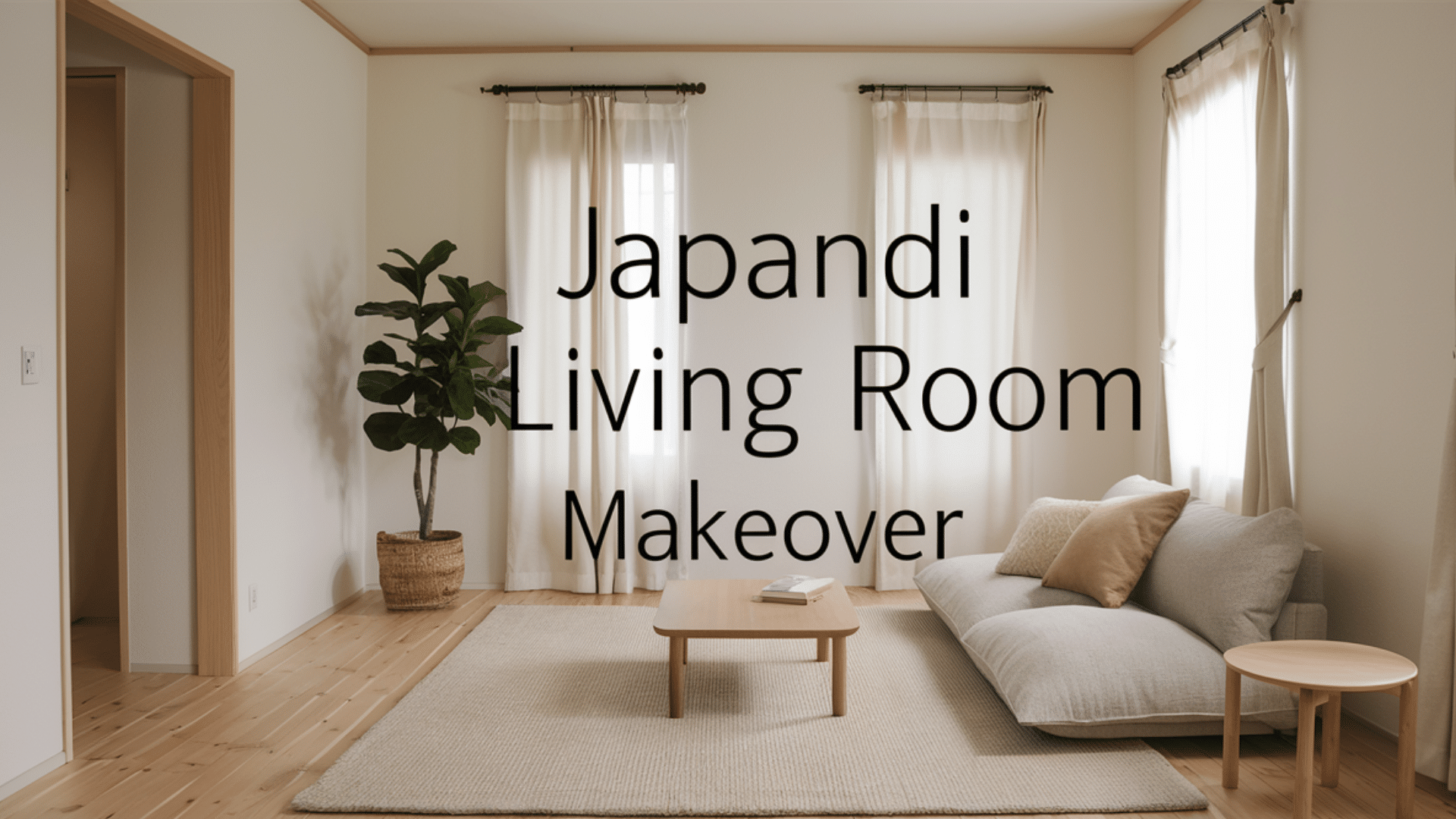If you want your living room to feel calm, clean, and welcoming, a Japandi style might be just right. Japandi is a mix of Japanese and Scandinavian design.
It blends the peaceful, natural look of Japanese homes with the cozy, simple touch of Scandinavian spaces. The result is a living room that feels relaxed but not empty, warm but not cluttered.
This design style has become popular because it offers more than just a nice look. It brings a sense of peace and purpose to the way we live. In a world that often feels loud and busy, Japandi gives us a chance to slow down. It encourages you to clear the clutter, enjoy natural materials, and focus on what really matters.
What Is Japandi Style?
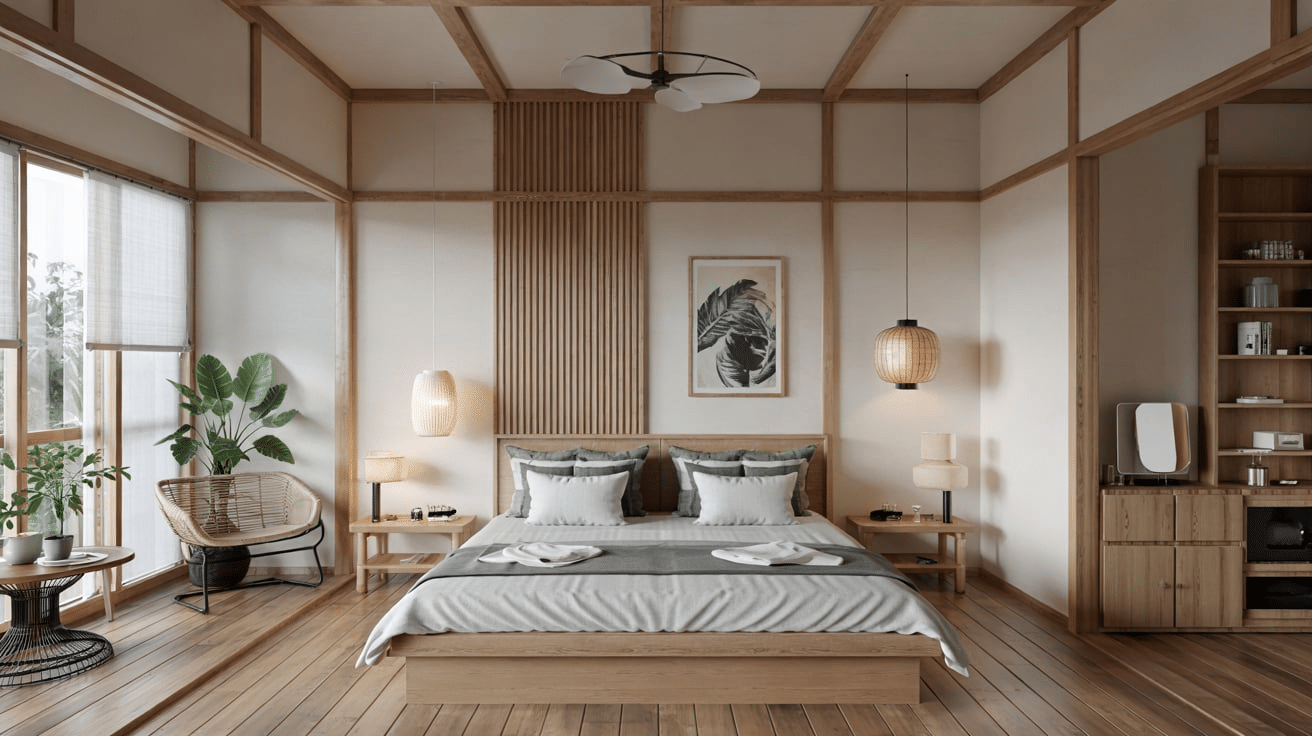
Japandi is a blend of two styles: Japanese and Scandinavian. Both focus on simplicity, nature, and balance. Japanese design is known for its quiet beauty, natural materials, and connection to the outdoors. Scandinavian design, or “Scandi,” is known for its clean lines, light colors, and cozy touches.
When you put them together, you get a design style that feels both warm and calm. Japandi is not just about looks—it’s also about creating a peaceful home where everything has a purpose.
Why Choose a Minimalist Japandi Living Room?
A Japandi living room isn’t just nice to look at—it helps you feel better, too. With less clutter and more focus on natural beauty, it becomes easier to relax and enjoy your home.
This style encourages you to:
- Choose carefully instead of quickly
- Keep your space clean and open
- Focus on comfort and calm
Simple Ways to Create a Japandi-Style Living Room
Now that you know what Japandi is and why it’s so appealing, let’s go over ways to design a Japandi-inspired living room.
1. Stick to a Soft, Natural Color Palette
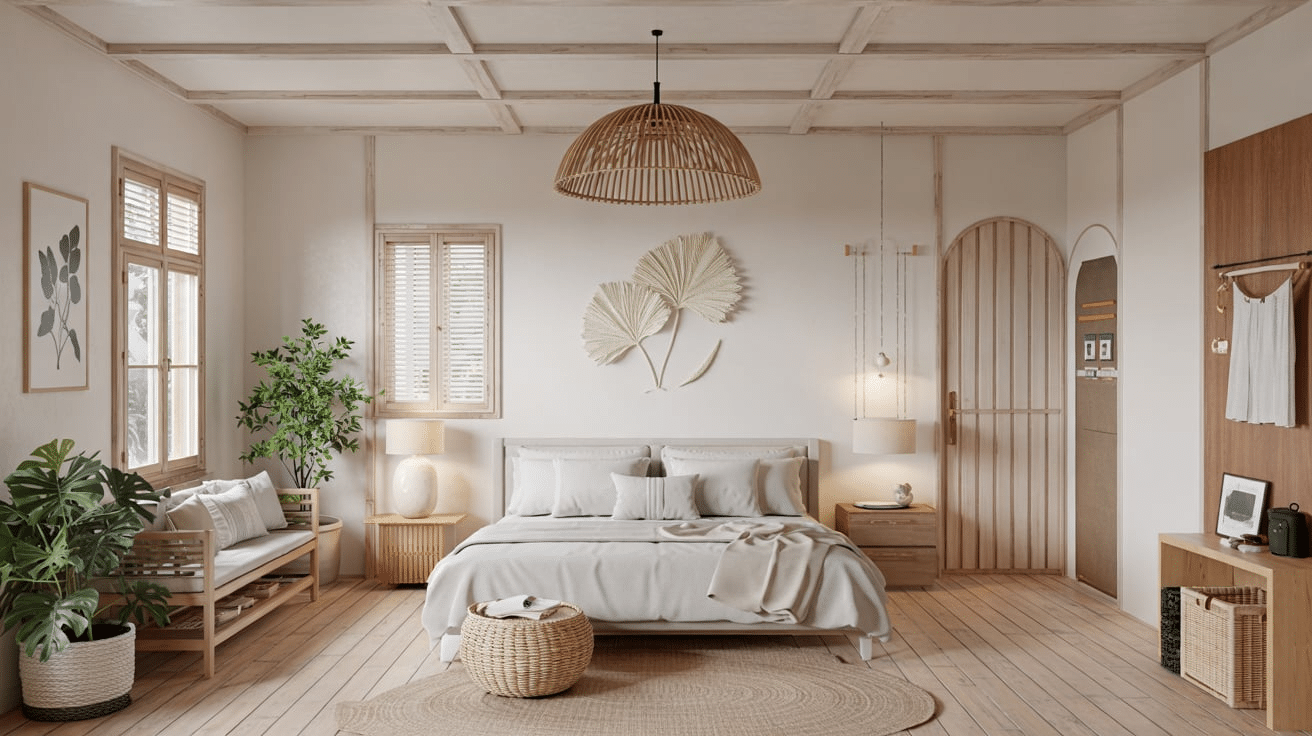
Japandi spaces use colors that feel calm and close to nature. Think soft whites, beiges, warm grays, and earthy tones like sand, clay, or charcoal. These colors make the space feel open and peaceful.
Avoid too many bold or bright shades. Instead, try adding color with natural materials like wood, stone, or a green plant. Keep the overall look quiet and balanced.
2. Choose Low-Simple Furniture
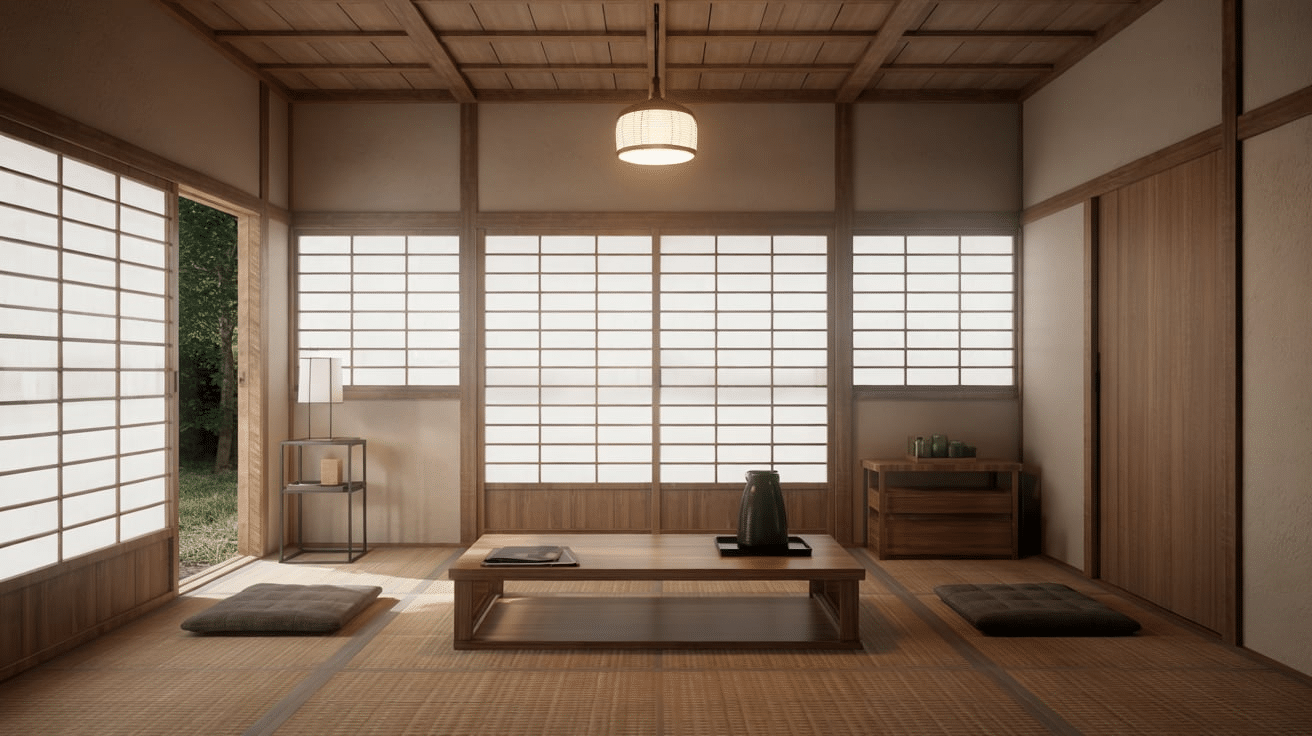
In both Japanese and Scandinavian styles, furniture is often close to the ground. It creates a grounded feeling and adds to the calm look. Think low sofas, wooden coffee tables, and floor cushions.
Keep furniture shapes clean and simple. Avoid big, bulky pieces. Choose items with straight lines and light colors. And if you can, use natural wood like oak, ash, or walnut.
3. Let In Natural Light
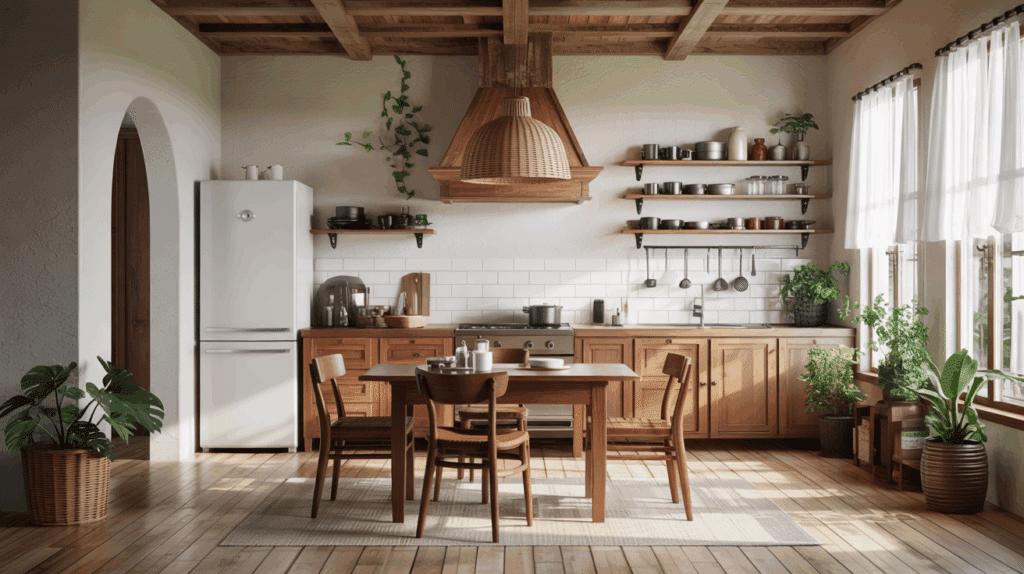
Natural light is key in Japandi living rooms. Open windows, use light curtains, and avoid blocking light with heavy furniture.
If you need window coverings, go for thin, white linen curtains or light wooden blinds. These let light through while giving you privacy.
Lighting should feel soft, not too bright. Use warm bulbs and choose lamps with clean shapes and neutral colors.
4. Use Fewer But Better Items
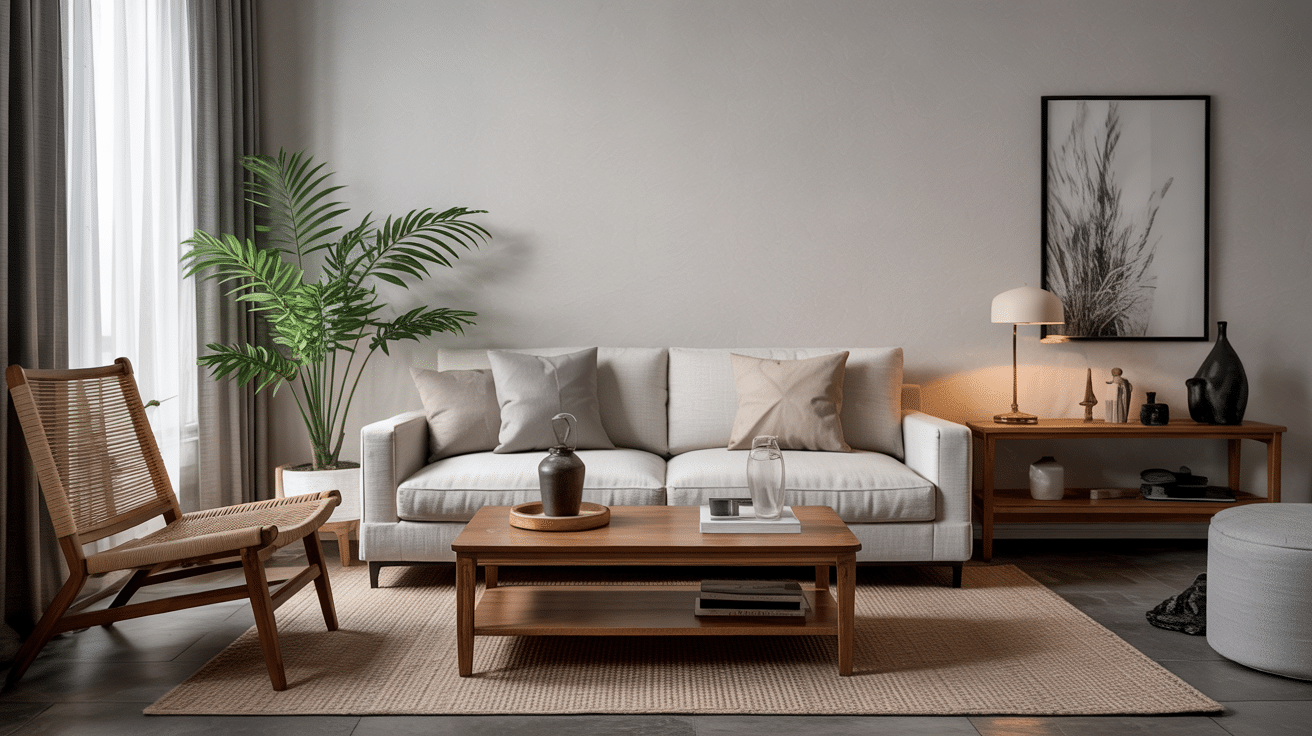
Japandi living rooms are all about less stuff but better stuff. Don’t fill your space with lots of decorations or extra furniture. Choose a few things you really love or need, and let them stand out.
For example, one large piece of wall art or a single vase with fresh flowers can do more than ten little things on a shelf. Keep shelves mostly empty. Let open space be part of the design.
5. Pick Functional Decor

Everything in your living room should have a purpose. That means the things you use to decorate should either be useful or have meaning.
Think about:
- A handwoven basket that holds extra blankets
- A teapot you use often, placed on a tray
- A book you love sitting on a table
This keeps the space personal but not messy.
6. Bring in Natural Materials
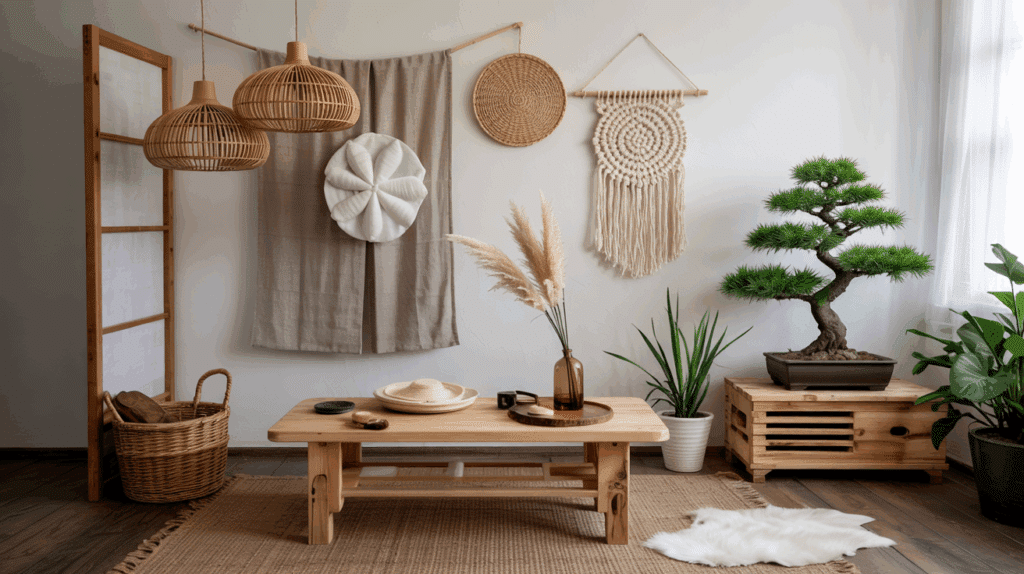
Nature is a big part of the Japandi style. Add wood, linen, wool, clay, and cotton to your living room. These materials add warmth without feeling fancy.
Use wooden frames, woven rugs, clay pots, or linen throws. They don’t have to match perfectly. Just make sure they feel soft and real.
Avoid shiny plastic or things that look too perfect. Choose materials that show texture, like wood with visible grain or stone with small flaws.
7. Add Plants for Life and Calm
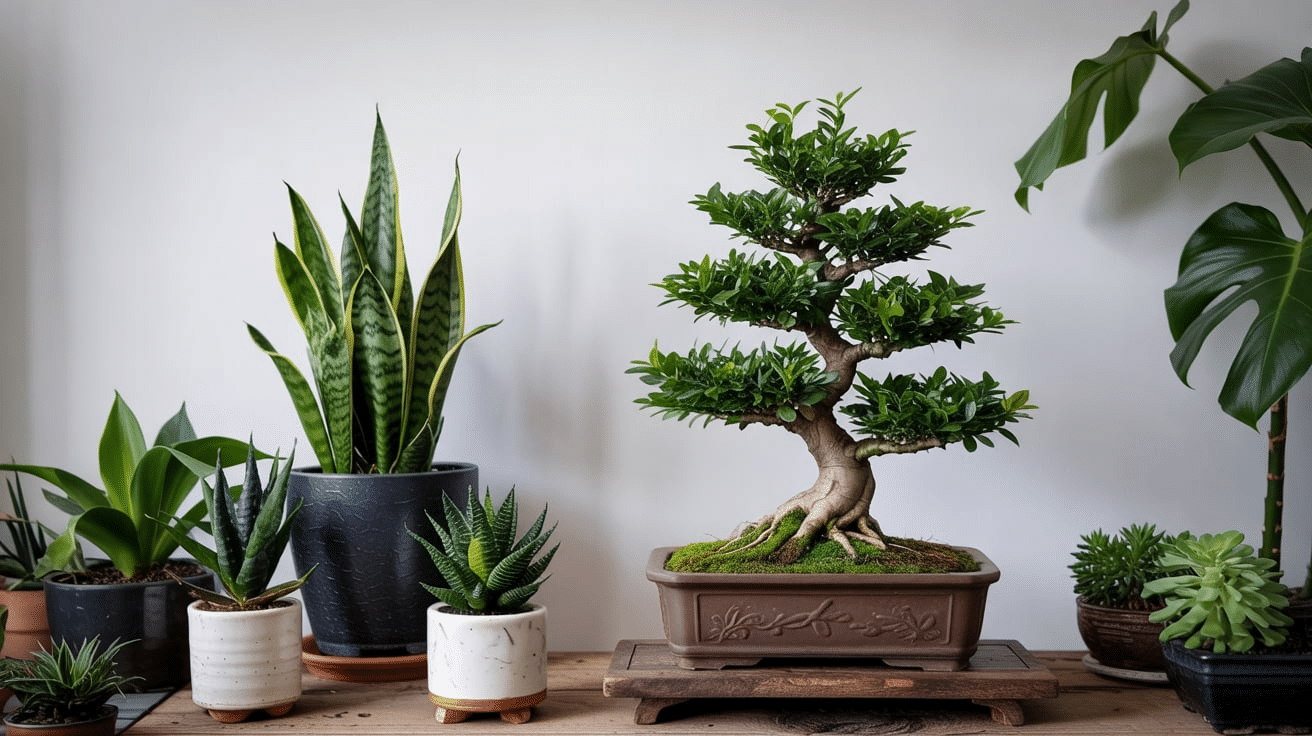
Plants bring color and life into a minimalist space. Choose simple, green plants like snake plants, peace lilies, or small bonsai trees.
You don’t need a lot. One or two healthy plants in clay pots can do a lot. Make sure the pots match the natural feel of your room—go for stone, ceramic, or terracotta instead of plastic.
8. Use Texture Instead of Pattern
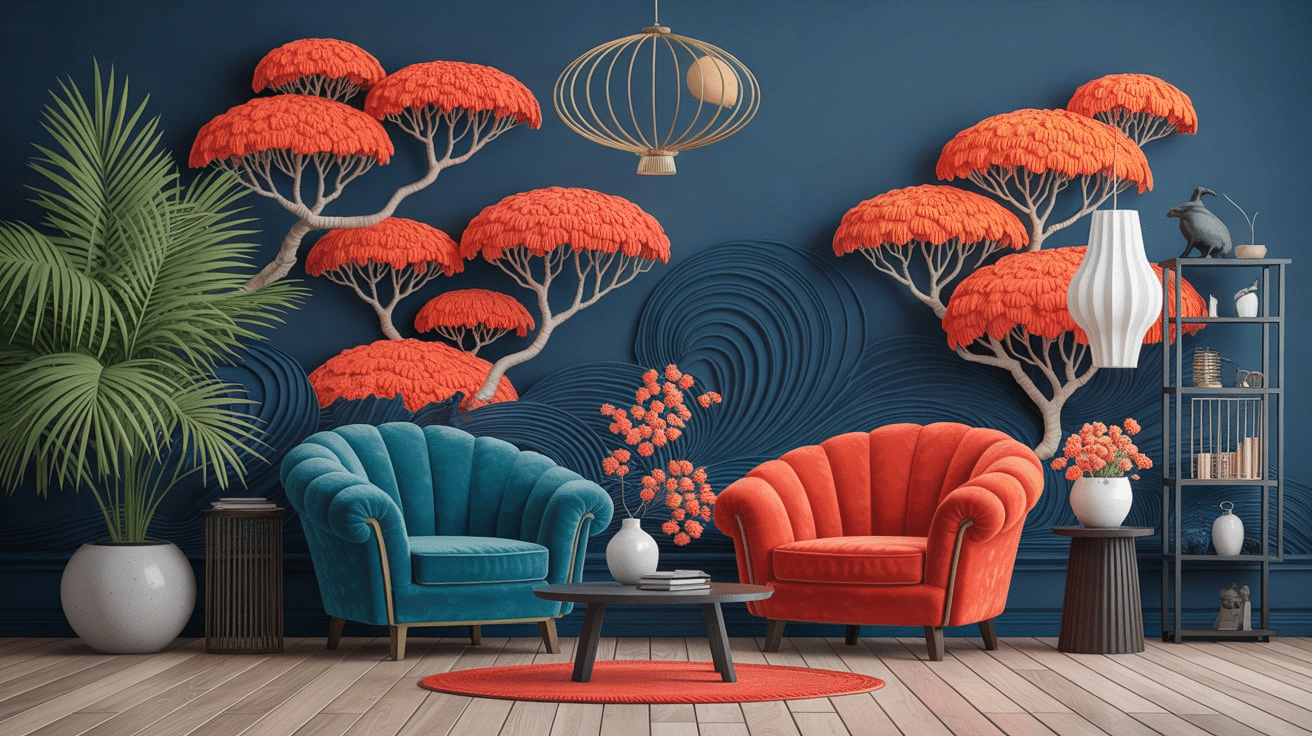
Japandi rooms often skip loud patterns. Instead, they use texture to keep things interesting. Think of a linen pillow, a wool rug, or a ceramic vase.
These touches make the room feel warm and lived-in. They also help you enjoy the beauty of each object without needing busy designs.
Try layering different textures in soft colors—a cotton throw on a linen sofa, or a wooden tray on a stone table.
9. Choose Simple, Low-Profile Storage
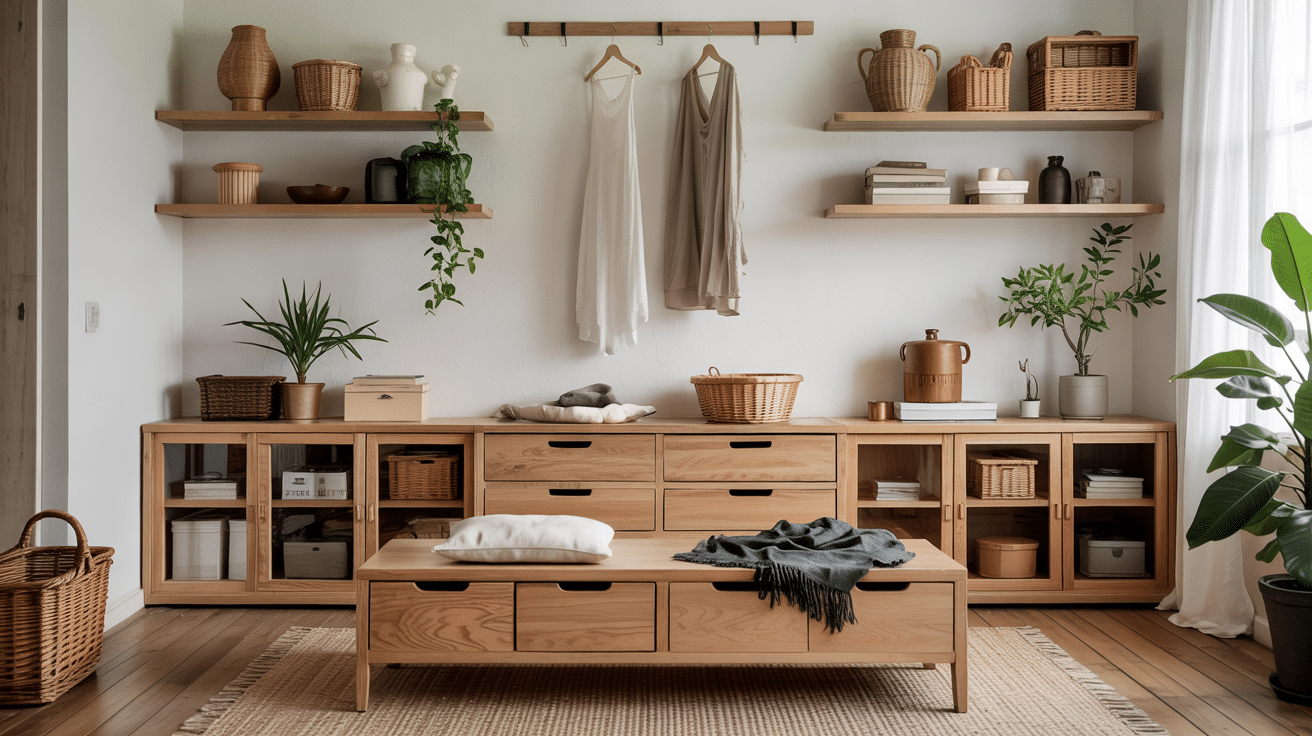
Clutter is the enemy of a calm space. But instead of hiding things in giant cabinets, use low storage that blends in.
Think of:
- Floating shelves in light wood
- Open cabinets with neat baskets
- Benches with drawers
These pieces keep your room tidy while still looking clean and open.
10. Keep the Layout Open and Balanced
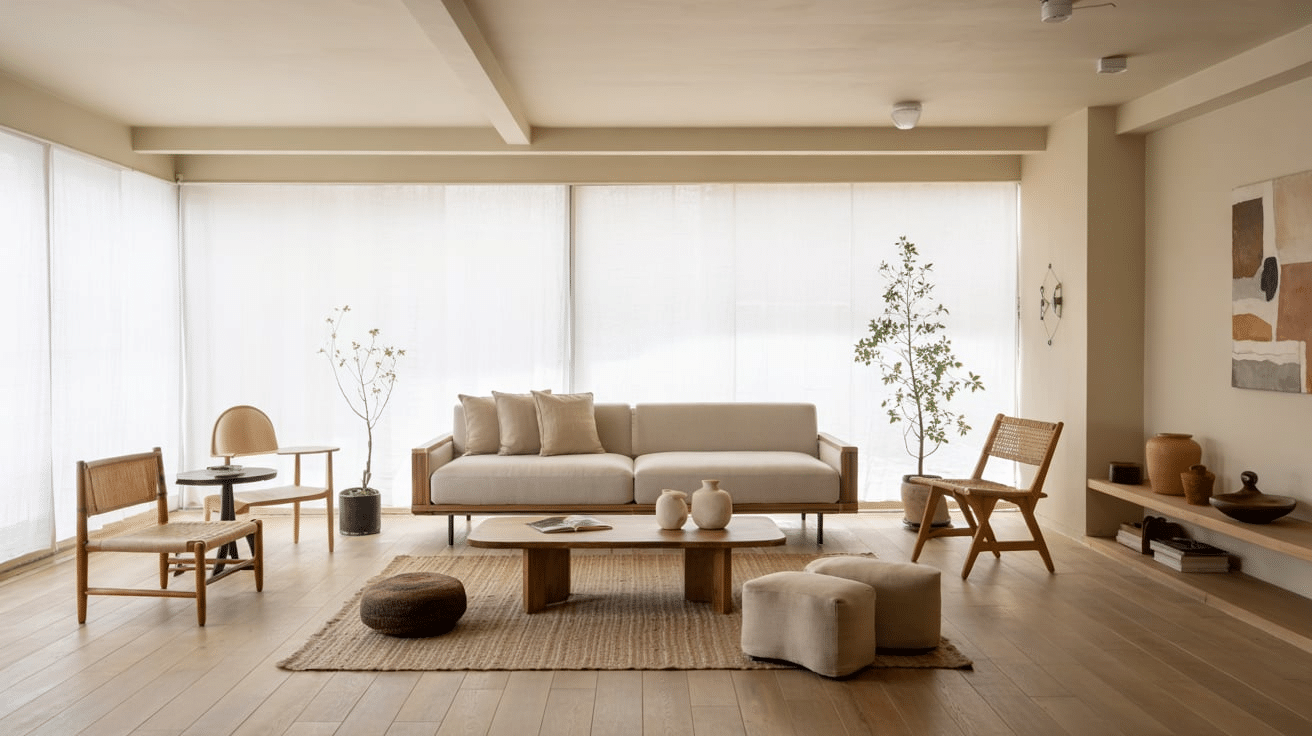
The way your furniture is placed makes a big difference. In Japandi design, everything has space to breathe. Don’t push all your furniture against the walls. Leave room around each item.
Make sure the space feels balanced. If one side of the room feels heavy, add something simple on the other side to even it out.
Leave open floor space when you can. It makes the room feel bigger and helps the design feel more thoughtful.
11. Add Personal Touches with Meaning
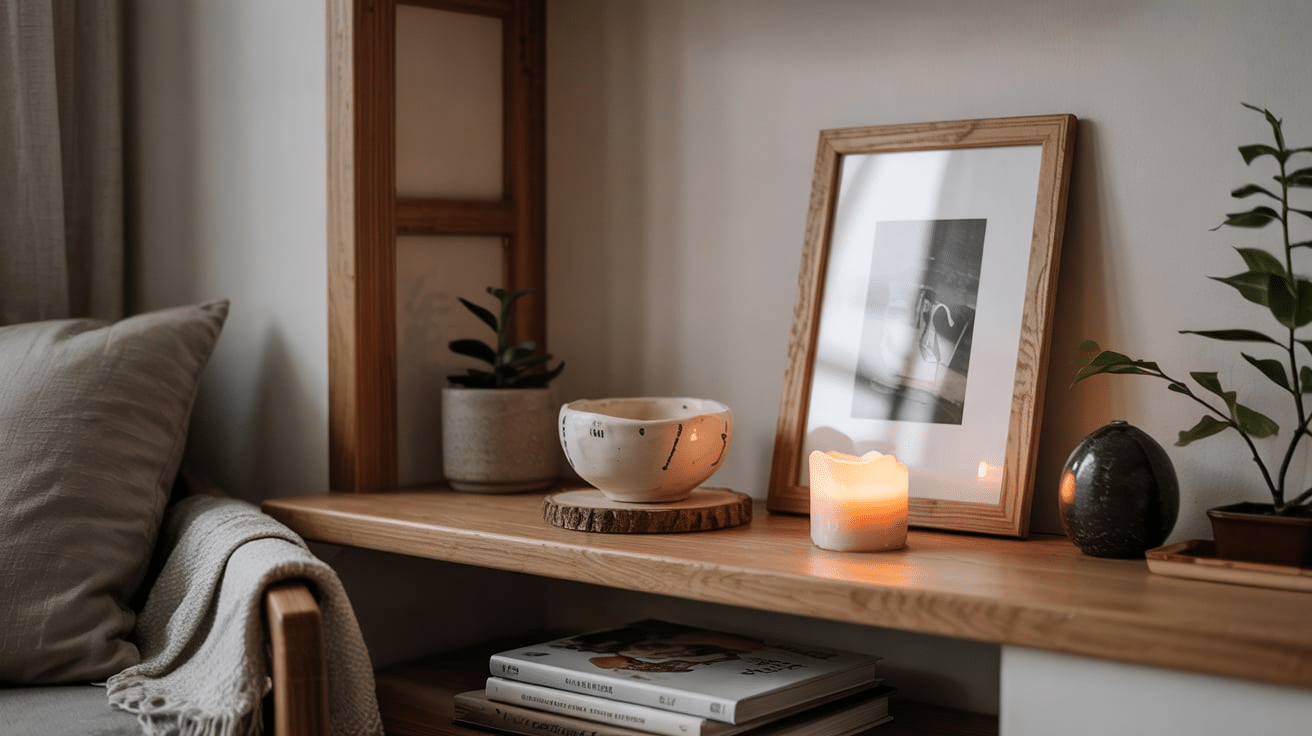
Just because the style is minimalist doesn’t mean it should feel empty or cold. Add a few personal items that really mean something to you.
This could be:
- A handmade bowl
- A photo in a simple frame
- A candle with a soft scent
The key is to choose things you truly enjoy and place them where they can be seen and appreciated.
12. Keep It Calm Over Time
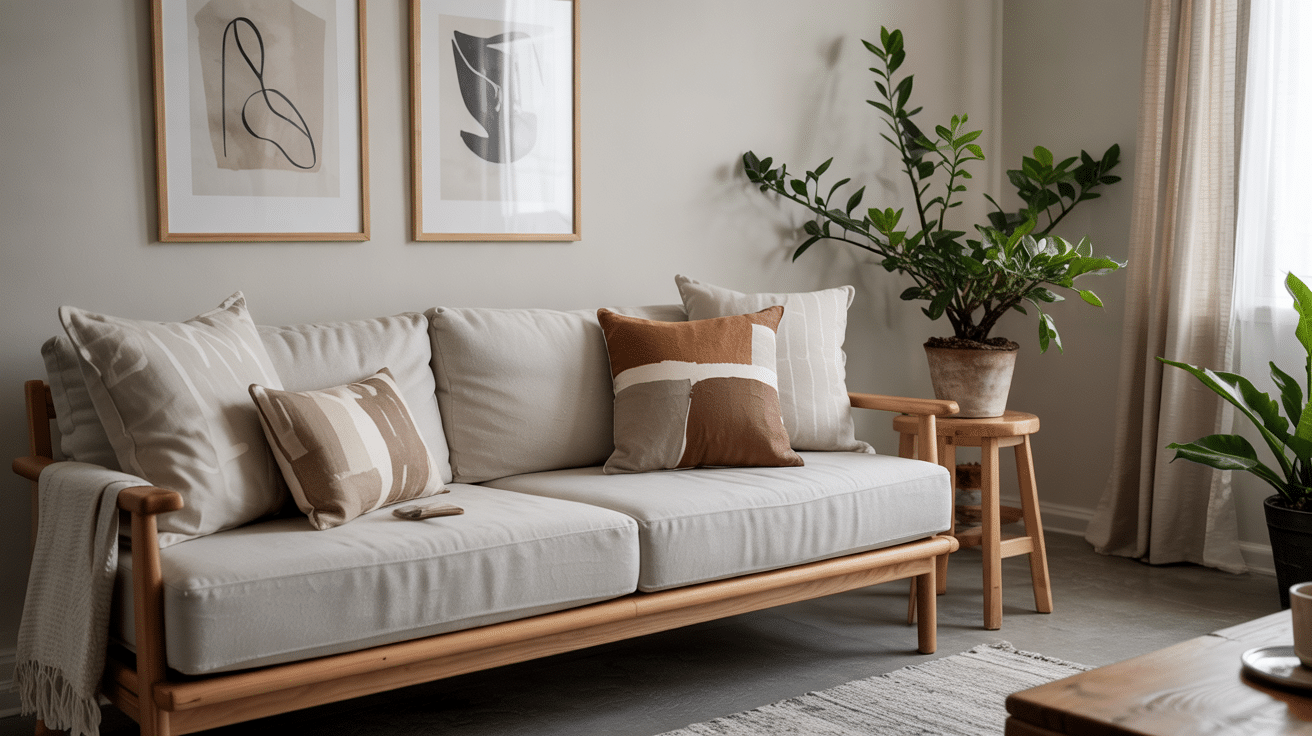
Japandi style isn’t just about how your living room looks—it’s also about how it feels to live in it. Keep it clean, organized, and calm. Let it change slowly with the seasons.
You can update the space by:
- Swapping out pillows
- Adding a different plant
- Changing your wall art
But keep the overall look simple. Don’t add things just to fill space. Choose slowly and with care.
Final Thoughts
Creating a Japandi-inspired minimalist living room takes time, but it’s worth it. You’re not just designing a space—you’re building a calm, useful place where you can feel at ease.
Stick to natural colors and materials. Keep your layout simple and your storage smart. Use a few meaningful items instead of many random ones. And most of all, choose pieces that make you feel good.
This style isn’t about perfection. It’s about peace. And when your home feels peaceful, your life starts to feel that way too.

